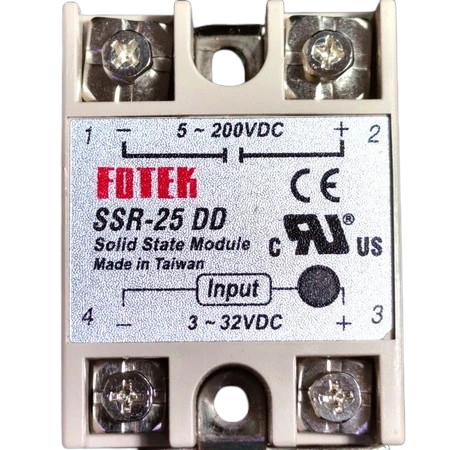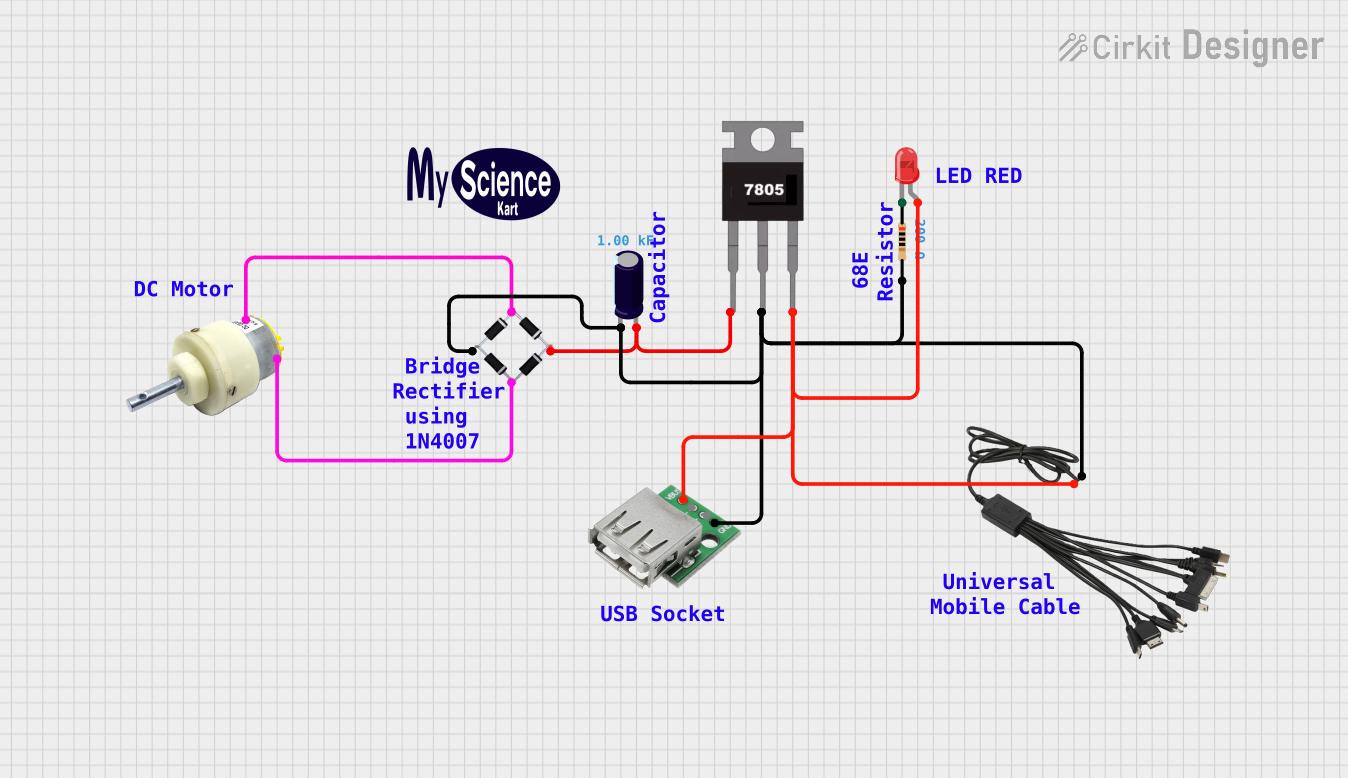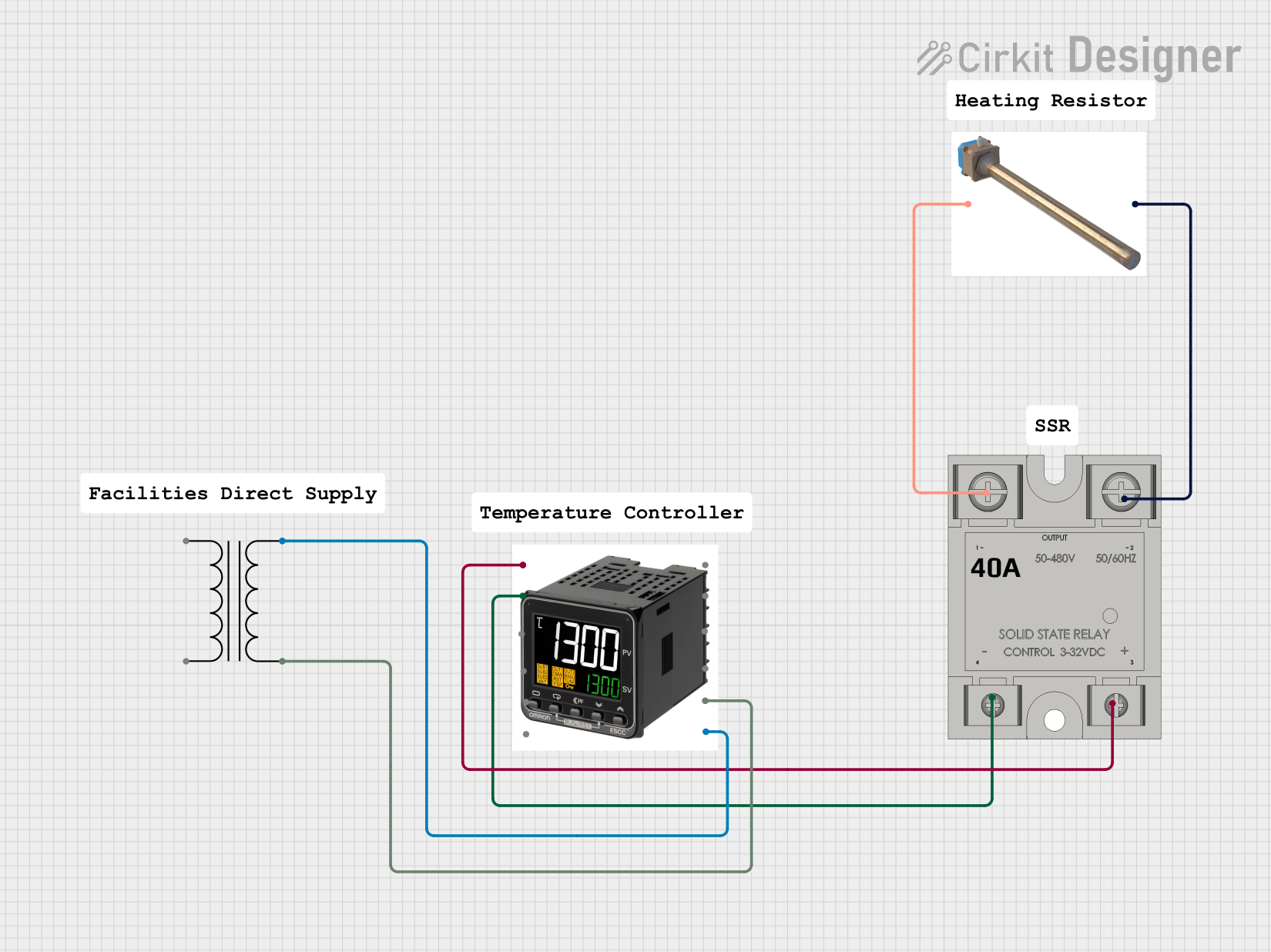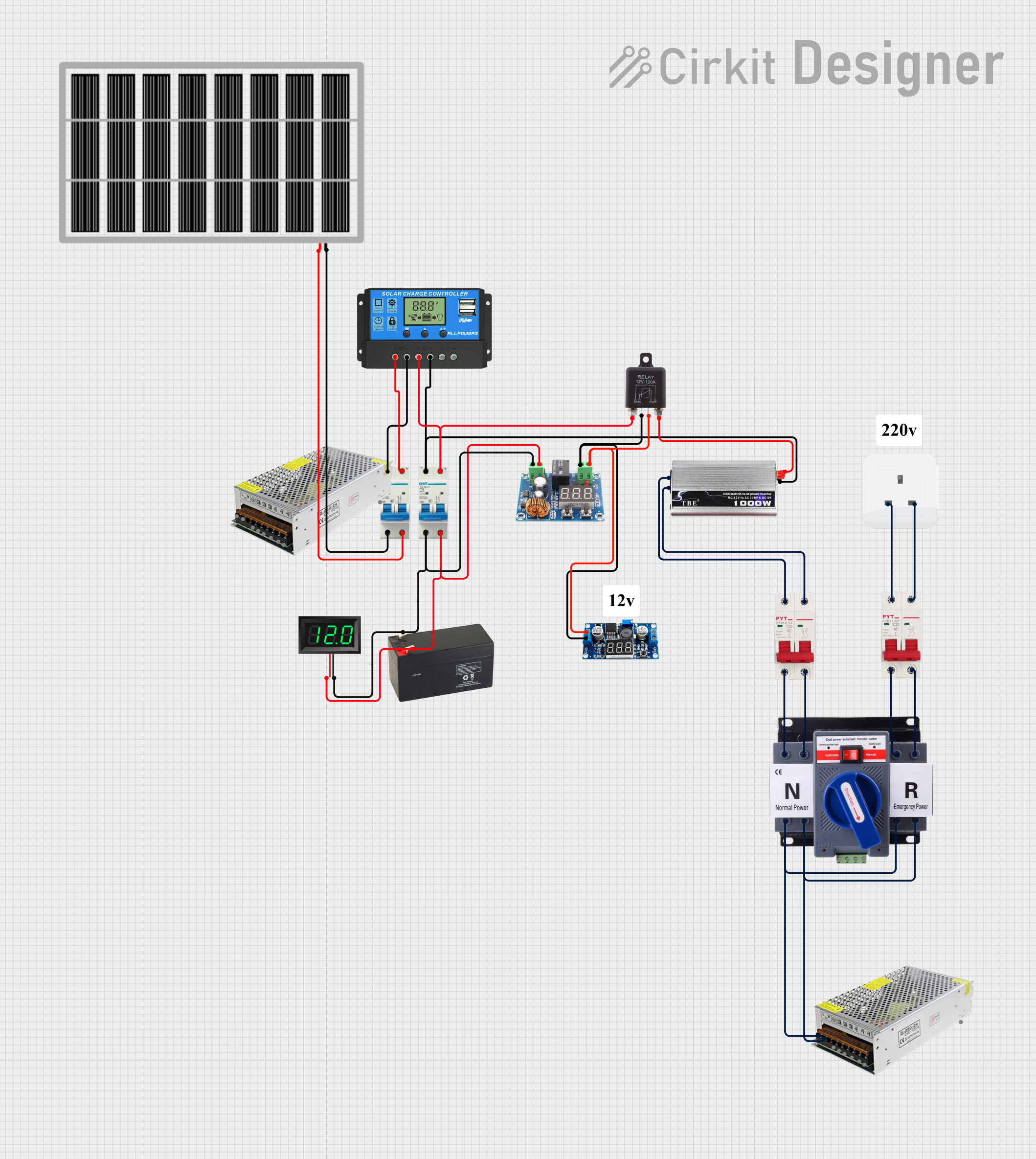
How to Use SSR DC - DC: Examples, Pinouts, and Specs

 Design with SSR DC - DC in Cirkit Designer
Design with SSR DC - DC in Cirkit DesignerIntroduction
The Fotek SSR DC - DC is a Solid State Relay (SSR) designed specifically for DC applications. Unlike traditional mechanical relays, this SSR uses semiconductor switching technology, enabling faster operation, silent switching, and a significantly longer lifespan. It is ideal for controlling high-voltage DC loads using low-voltage control signals, making it a reliable and efficient choice for various applications.
Explore Projects Built with SSR DC - DC

 Open Project in Cirkit Designer
Open Project in Cirkit Designer
 Open Project in Cirkit Designer
Open Project in Cirkit Designer
 Open Project in Cirkit Designer
Open Project in Cirkit Designer
 Open Project in Cirkit Designer
Open Project in Cirkit DesignerExplore Projects Built with SSR DC - DC

 Open Project in Cirkit Designer
Open Project in Cirkit Designer
 Open Project in Cirkit Designer
Open Project in Cirkit Designer
 Open Project in Cirkit Designer
Open Project in Cirkit Designer
 Open Project in Cirkit Designer
Open Project in Cirkit DesignerCommon Applications and Use Cases
- Industrial automation systems
- Motor control in DC circuits
- Battery management systems
- Solar power systems
- LED lighting control
- Robotics and IoT projects
Technical Specifications
The following table outlines the key technical specifications of the Fotek SSR DC - DC:
| Parameter | Value |
|---|---|
| Manufacturer | Fotek |
| Part ID | Not specified |
| Input Control Voltage | 3-32 V DC |
| Output Voltage Range | 5-220 V DC |
| Maximum Output Current | 25 A |
| Trigger Current | ≤ 7.5 mA |
| On-State Voltage Drop | ≤ 1.5 V |
| Switching Speed | ≤ 10 ms |
| Insulation Resistance | ≥ 1000 MΩ (at 500 V DC) |
| Dielectric Strength | 2500 V AC (input to output) |
| Operating Temperature | -30°C to +80°C |
| Mounting Type | Panel-mounted |
Pin Configuration and Descriptions
The Fotek SSR DC - DC has four terminals, as described in the table below:
| Pin Number | Label | Description |
|---|---|---|
| 1 | + (Input) | Positive terminal for the control signal (3-32 V DC). |
| 2 | - (Input) | Negative terminal for the control signal (ground). |
| 3 | + (Load) | Positive terminal for the DC load (5-220 V DC). |
| 4 | - (Load) | Negative terminal for the DC load (ground). |
Usage Instructions
How to Use the Component in a Circuit
Connect the Control Signal:
- Attach the positive control signal (3-32 V DC) to the
+ (Input)terminal. - Connect the ground of the control signal to the
- (Input)terminal.
- Attach the positive control signal (3-32 V DC) to the
Connect the Load:
- Connect the positive terminal of the DC load to the
+ (Load)terminal. - Connect the negative terminal of the DC load to the
- (Load)terminal.
- Connect the positive terminal of the DC load to the
Power the Circuit:
- Ensure the control signal voltage is within the specified range (3-32 V DC).
- Apply the load voltage (5-220 V DC) to the load terminals.
Switching:
- When the control signal is applied, the SSR will switch on, allowing current to flow through the load.
- Removing the control signal will turn the SSR off, stopping current flow.
Important Considerations and Best Practices
- Heat Dissipation: Ensure proper heat dissipation by mounting the SSR on a heat sink if the load current is high.
- Polarity: Observe correct polarity for both the control signal and the load connections.
- Voltage and Current Ratings: Do not exceed the specified voltage and current ratings to avoid damage to the SSR.
- Isolation: The SSR provides electrical isolation between the control and load sides, but ensure proper grounding for safety.
- Switching Speed: The SSR is designed for fast switching, but avoid rapid on/off cycles that could lead to overheating.
Example: Using the SSR DC - DC with an Arduino UNO
The following example demonstrates how to control a DC load using the Fotek SSR DC - DC and an Arduino UNO.
Circuit Diagram
- Connect the Arduino's digital output pin (e.g., pin 9) to the
+ (Input)terminal of the SSR. - Connect the Arduino's ground (GND) to the
- (Input)terminal of the SSR. - Connect the DC load to the
+ (Load)and- (Load)terminals of the SSR.
Arduino Code
// Define the pin connected to the SSR control input
const int ssrPin = 9;
void setup() {
// Set the SSR pin as an output
pinMode(ssrPin, OUTPUT);
}
void loop() {
// Turn the SSR on (control signal HIGH)
digitalWrite(ssrPin, HIGH);
delay(5000); // Keep the load on for 5 seconds
// Turn the SSR off (control signal LOW)
digitalWrite(ssrPin, LOW);
delay(5000); // Keep the load off for 5 seconds
}
Troubleshooting and FAQs
Common Issues and Solutions
SSR Not Switching On:
- Cause: Insufficient control signal voltage or current.
- Solution: Verify that the control signal voltage is within the 3-32 V DC range and the current is sufficient (≥ 7.5 mA).
Load Not Receiving Power:
- Cause: Incorrect load connections or insufficient load voltage.
- Solution: Check the polarity and ensure the load voltage is within the 5-220 V DC range.
Overheating:
- Cause: Excessive load current or rapid switching.
- Solution: Use a heat sink and avoid rapid on/off cycles.
SSR Stuck in On/Off State:
- Cause: Damaged SSR due to overvoltage or overcurrent.
- Solution: Replace the SSR and ensure the voltage and current ratings are not exceeded.
FAQs
Q: Can the SSR DC - DC be used for AC loads?
A: No, this SSR is designed specifically for DC loads. For AC loads, use an AC-rated SSR.
Q: Does the SSR require an external power supply?
A: No, the SSR operates directly from the control signal voltage (3-32 V DC).
Q: Can I use the SSR for PWM control?
A: While the SSR can handle fast switching, it is not ideal for high-frequency PWM control due to potential heating issues.
Q: How do I mount the SSR?
A: The SSR is panel-mounted. Use screws and ensure proper heat dissipation with a heat sink if necessary.